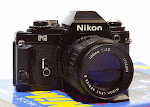Paris, 1839, Daguerre introduces the world to photography. America’s George Eastman brings photography to the masses in 1890. The Germans jump onboard and bring the highest quality of engineering and optical performance to mass-market production; by 1920 Leica and Rolleiflex are introduced and remain on the market for many years to come. The Japanese are not to be left out, by the1950’s using computer technology they design lenses and optics of very high quality. They then took micro circuitry concepts and computer chips to a new level developing the metering systems, automatic exposure systems, and auto focus systems that we take for granted today.
And now the digital age!
Photography has come along way.
What is a camera?
1. A camera is a lightproof box. That’s all there is to it. The body keeps unwanted light out.
2. A lens is glass that gathers light rays and focuses them to form an image on film or your digital sensor. Most lenses contain multiple lens elements. (More than one piece of optical glass.)

3. Film/Digital Sensor – film is a light sensitive material (silver halide) that records your images when treated with chemicals. A digital sensor reacts to the light and stores information onto your memory card.
4. Your viewfinder shows you the image that will be recorded. Some viewfinders are just little glass window (rangefinder cameras) while other viewfinders allow you to view directly through the lens, such as an SLR /DSLR camera.
5. The shutter is a mechanical or electronic device that controls the length of time that light is allowed to enter your camera.
6. The shutter release simply activates the shutter.
7. The diaphragm is the lens opening, which varies in size. The opening controls the amount of light that enters the camera at any given time. The “iris” (diaphragm) is a series of metal leafs that overlap leaving a circular opening in the center. This opening can be made large or small by rotating a ring on your lens. Some camera lenses are auto focus and will automatically change via a microchip.

And now the digital age!
Photography has come along way.
What is a camera?
1. A camera is a lightproof box. That’s all there is to it. The body keeps unwanted light out.
2. A lens is glass that gathers light rays and focuses them to form an image on film or your digital sensor. Most lenses contain multiple lens elements. (More than one piece of optical glass.)

3. Film/Digital Sensor – film is a light sensitive material (silver halide) that records your images when treated with chemicals. A digital sensor reacts to the light and stores information onto your memory card.
4. Your viewfinder shows you the image that will be recorded. Some viewfinders are just little glass window (rangefinder cameras) while other viewfinders allow you to view directly through the lens, such as an SLR /DSLR camera.
5. The shutter is a mechanical or electronic device that controls the length of time that light is allowed to enter your camera.
6. The shutter release simply activates the shutter.
7. The diaphragm is the lens opening, which varies in size. The opening controls the amount of light that enters the camera at any given time. The “iris” (diaphragm) is a series of metal leafs that overlap leaving a circular opening in the center. This opening can be made large or small by rotating a ring on your lens. Some camera lenses are auto focus and will automatically change via a microchip.

8. Film advance is a lever on manual cameras used to advance film to the next frame. Auto focus cameras will advance automatically, digital cameras the same.
This is the basic camera design. Digital cameras of course have much more circuitry but the light tight box and amount of light let in to capture an image are of the same principal. This may seem old hat to many who read this, but to those who just picked up a camera this is information well worth reading.

No comments:
Post a Comment